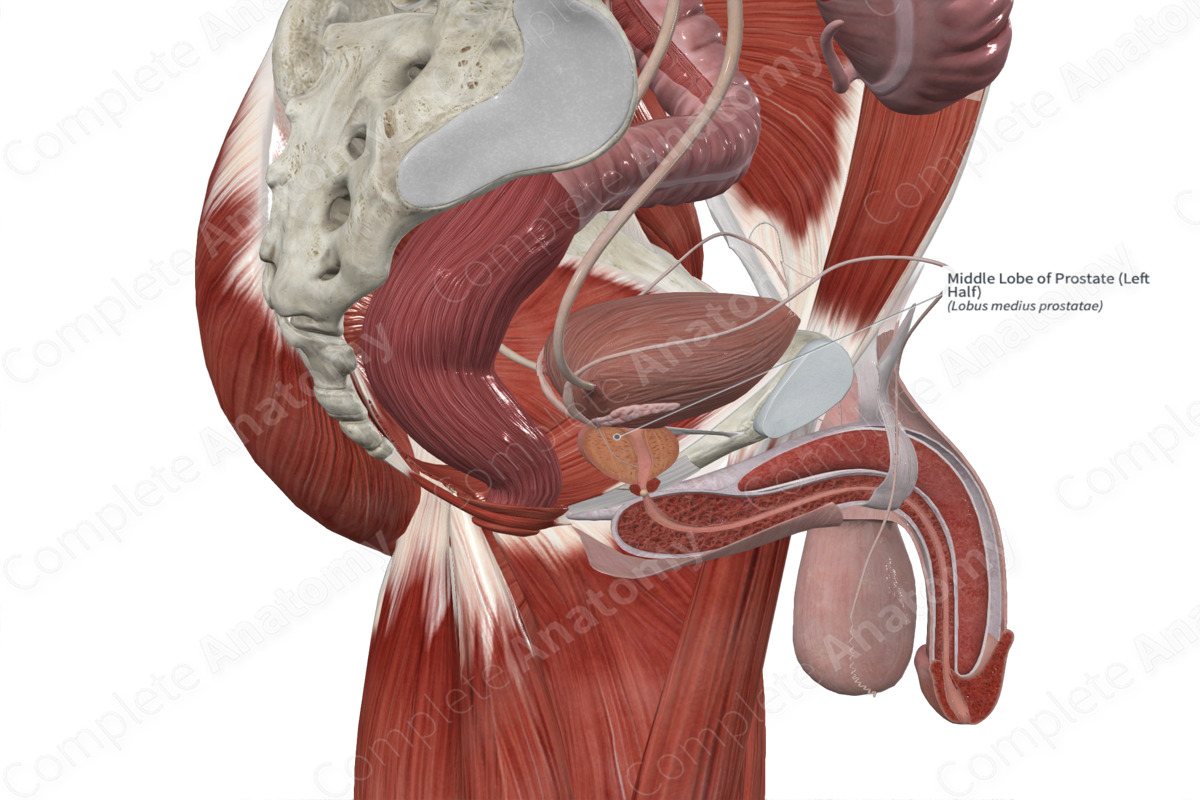
Quick Facts
Location: Between the ejaculatory ducts posteriorly and the prostatic urethra anteriorly.
Arterial Supply: Inferior vesical, internal pudendal, and middle rectal arteries.
Venous Drainage: Prostatic venous plexus.
Innervation: Autonomic: Inferior hypogastric plexus.
Lymphatic Drainage: External and internal iliac lymph nodes.
Structure/Morphology
The embryonic middle lobe of the prostate is a cone-shaped portion of the prostate gland which gives rise to the superomedial and anteromedial lobule.
Anatomical Relations
The middle lobe of the prostate is located between the ejaculatory ducts posteriorly and the prostatic urethra anteriorly.
Function
The prostate provides passage for urine and sperm out of the body. During ejaculation, the prostate secretes a slightly alkaline fluid into the prostatic urethra. Fluid from the prostate, together with seminal fluid from the seminal gland, and sperm from the ductus deferens combine to form semen.
The middle lobe tends to undergo hormone induced hypertrophy with advancing age.
Arterial Supply
The prostate receives blood from various sources. Prostatic branches from the inferior vesical artery communicate across the midline of the prostate. The inferior gluteal, internal pudendal, and middle rectal arteries supply the prostate gland.
Venous Drainage
The prostatic venous plexus surrounds the anterolateral aspect of the prostate. It receives tributaries from the deep dorsal vein of the penis and the vesical venous plexus and drains into the internal iliac veins.
Innervation
The prostate gland receives both autonomic and somatic visceral innervation. The inferior hypogastric plexus supplies the prostate. The nerves traveling to the prostate form a peri-prostatic nerve plexus within the prostatic capsule. The prostatic plexus supplies the smooth muscle of the prostate and prostatic urethra. The transversely crescent-shaped skeletal muscle is supplied by the pudendal nerve. This skeletal muscle contracts and dilates the prostatic urethra.
Lymphatic Drainage
The lymphatic drainage of the prostate is through the medial group of external iliac nodes, in which the efferent nodes pass to the internal iliac lymph nodes.
List of Clinical Correlates
—Prostate cancer
—Benign prostatic hyperplasia
Learn more about this topic from other Elsevier products



